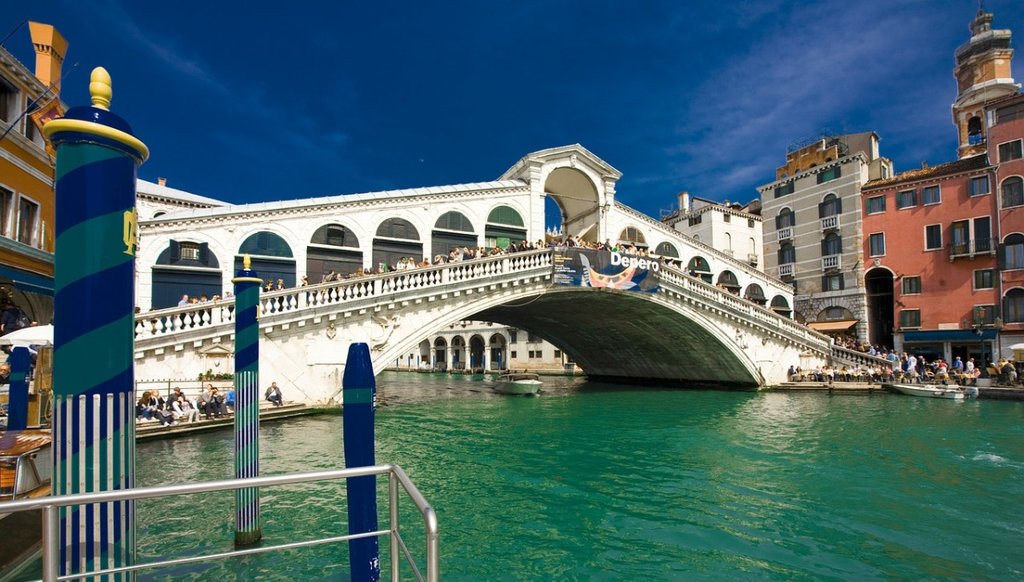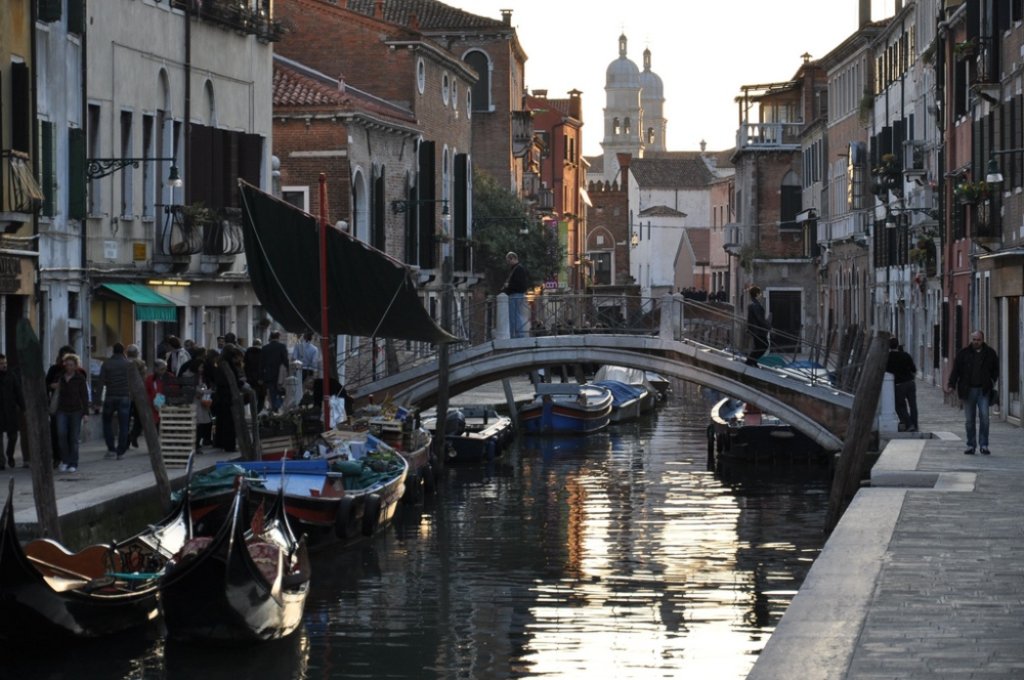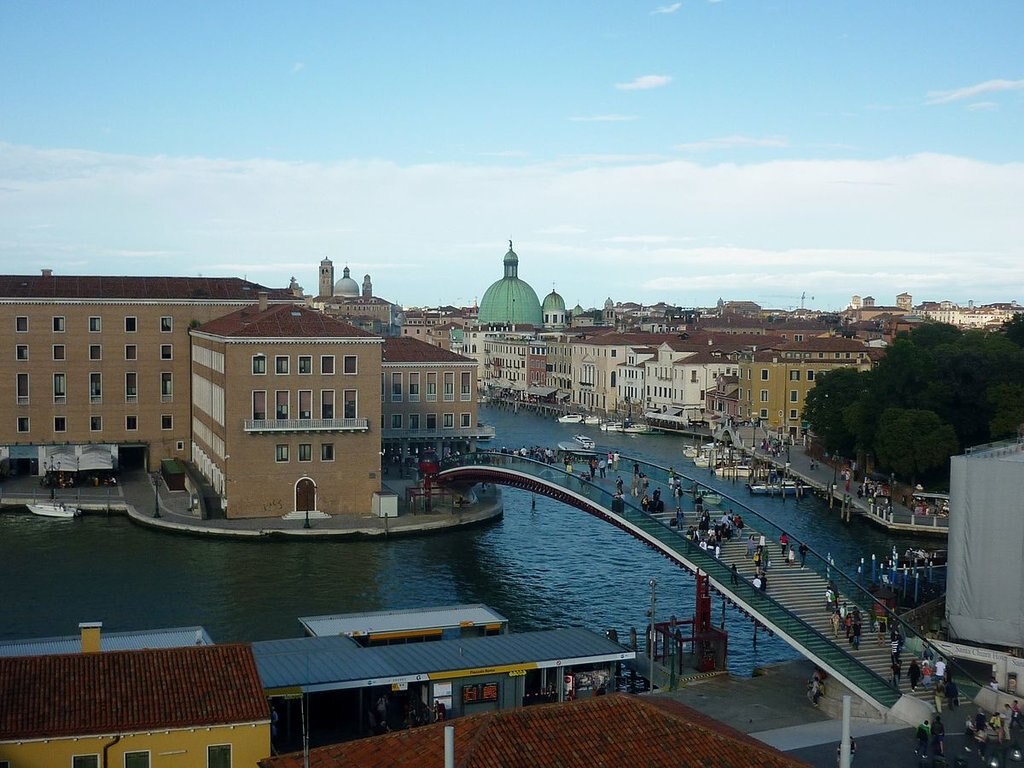Venice’s 10 most beautiful bridges
“For many, a trip to Venice is a unique, unforgettable and sometimes magical experience. Venice’s prevailing element, water, is what gives the city its distinctive character and unique physiognomy, forming the most famous canal system in the world. As well as offering superb views across the city, the bridges that cross these canals constitute some of Venice’s most authentic examples of artistic expression.
Venice currently boasts a total of 438 bridges, although this number changes fairly frequently as new suspension bridges are constructed and those crossing smaller canals that have been filled in, and therefore no longer serve a purpose, are demolished. This includes 300 stone, 63 iron and 75 wooden bridges, some of which are genuine works of art!
The very first bridges, or, rather, walkways with no sides or railings, were built alongside the development of the island of Rialto in the year 813, and since then have facilitated connections between the city’s 118 islands, across which the city gradually took shape. Today, walking along these structures of historic and artistic heritage instantly takes you back in time to the period of the Doges and la Serenissima. Read on to discover Venice’s 10 most beautiful bridges.
### 1. The first and most important: il Ponte di Rialto
Our journey starts at the famous Grand Canal, which, with its winding path, cuts the historic city of Venice in half. The banks of the Grand Canal were the first to be connected by a genuine bridge with fixed supports, finally replacing the precarious pontoon bridge in use up until that point. Its wooden structure, designed by Nicolò Barattiero during the second half of the 13th century, featured a central section that could be raised to allow boats with masts to pass underneath.
A century later, now wider and fitted with iron railings, the Rialto bridge was lined with an array of shops and boutiques and had already become the heart of a bustling trade centre. Over time, the bridge suffered damage and two subsequent collapses and it was therefore deemed necessary to create a more solid, stone construction. Designed by Antonio Da Ponte, this new structure was completed in 1591: a single arch spanning 28 metres in length and 22 metres in width, resting on an impressive 12,000 solid elm posts, and now one of the best-known symbols of Venice.

### 2. The Ponte dei Sospiri and its legend
Not far from Piazza San Marco, between the Doge’s Palace and the New Prisons, stands one of Venice’s most charming bridges. Designed by architect Antonio Contin, the Baroque-style “Bridge of Sighs” was constructed from Istrian stone and boasts an entirely closed, suspended structure, intended to prevent convicts from escaping as they were transferred to the prisons.
Legend has it that the bridge’s name derives from the lamenting cries and sighs of those who crossed it, allegedly coined by English poet Lord Byron. The Ponte dei Sospiri is also Venice’s most reproduced and cited bridge! From New York to England and even Peru, there are numerous copies inspired by the original. Are you curious to see what it’s like inside? We recommend the guided tour, but you’ll need to book in advance.

### 3. The Ponte dell’Accademia
Thirty-seven days, including Christmas, was how long it took to construct the new bridge over the Grand Canal in 1933, born from the ashes of the old Ponte della Carità. Despite originally being built as a temporary structure, over time this wooden bridge has become a must-see spot for tourists, offering stunning views over the Canalazzo and the Basin of San Marco.
The bridge was renovated in 2018 and its majestic arch, built from wood and metal, is still considered today one of the biggest in the world, spanning an impressive 48 metres in length. And so was born the tongue-in-cheek Venetian saying ‘Provvisorio come il Ponte dell’Accademia’ (temporary like the Ponte dell’Accademia)!
### 4. The Ponte degli Scalzi
The Ponte degli Scalzi, or as it is sometimes known, the Ponte della Ferrovia was constructed in 1846, following the inauguration of the Santa Lucia railway station and the consequent need to connect the north and south banks of the Grand Canal for quicker access. The first version, made from cast iron and designed by Neville – the same architect who designed the Ponte dell’Accademia – did not stand the test of time and was reconstructed in Istrian stone in the 1930s, this time designed by engineer Miozzi. Diego Valeri went on to define the elegant structure as “a slender yet pronounced brow with a candid magnificence.”
### 5. The Ponte dei Tre Archi
The last example of this particular type of construction, the Ponte di San Giobbe, renamed the Ponte dei Tre Archi (Bridge of the Three Arches), crosses the Cannaregio canal and is another of the city’s most important bridges. Two smaller side arches frame one larger central arch, from which visitors can enjoy a superb view over the canal and the surrounding area.
Built from wood during the beginning of the 16th century, the bridge was reconstructed in stone by Andrea Tirali in 1688, before being modernised once more at the end of the following century when the heavy brick balustrades were added.
### 6. A meeting point for rivals Castellani and Nicolotti: the Ponte dei Pugni
Of the various Venetian traditions, there is one in particular that has continued to resonate throughout the district of Dorsoduro for centuries; a tradition intrinsically linked to one specific bridge used as a battleground for the city’s epic war of fists. Between September and Christmas, the two rival factions Castellani and Nicolotti, led by their champions, would challenge each other to fist fights on the small bridge crossing the Rio di San Barnaba, which, at the time, had no railings.
Giving free rein to mutual animosity, the battle would often degenerate into brawls with sometimes tragic consequences, so much so that in 1700 the tradition was banned as it was considered too violent.

Ponte dei Pugni, by VeniceWiki, Under Creative Common License CC0 BY-SA 2.0 (https://creativecommons.org/licenses/by-sa/2.0/), https://www.flickr.com/photos/jumpinvenice/5807100623
### 7. The Ponte delle Tette
Yes, it’s true, Venice is indeed home to a “Bridge of the Breasts”! The origin of the name dates back to the Venetian Republic when the whole Carampane area was an actual red light district: prostitutes would proudly display their wares from nearby balconies to customers, who would take their pick from the bridge and its surrounding streets.
### 8. The Ponte della Paglia
If you’re into photography, you can’t miss this bridge for two reasons: not only does it offer the best possible view of the romantic Ponte dei Sospiri, but you can also admire one of Venice’s most beautiful sunsets as the sun slowly disappears behind the Basilica della Salute. The bridge crosses the Rio di Palazzo and takes its name from the boats that would moor nearby to offload straw (paglia).
### 9. The longest bridge: the Ponte della Libertà
“Venice’s days of isolation are over, without any harm caused to its divine beauty“. This was the title of the Istituto Luce newsreel in 1933 after the inauguration of the bridge connecting the city’s historic centre with mainland Italy.
Measuring almost four kilometres long and twenty metres wide, the project required enormous organisational efforts, and is still today the longest bridge in Italy and the main gateway into the lagoon city.
### 10. The last arrival: the Ponte di Calatrava
Inaugurated in 2008 and named after the famous architect Santiago Calatrava who designed it, the Ponte di Calatrava or Ponte della Costituzione was the fourth bridge to be constructed over the Grand Canal and connects Piazzale Roma with the Stazione di Santa Lucia. The structure is made from steel, whilst the floor and railings are made from glass, Istrian stone and trachyte, resulting in a modern look that complements the surrounding architecture.
Beautiful and above all extremely useful, the Ponte di Calatrava has, however, led to several problems in terms of … stability. In the humidity and rain, the glass floor becomes slippery and therefore dangerous – much to the frustration of the city’s municipal banks who have already had to compensate dozens of people who have been injured.

Ponte della Costituzione – By Christoph Radtke – Own work, CC BY 3.0, https://commons.wikimedia.org/w/index.php?curid=40160447
Photo Credit
Cover Photo:nVenice, gondolas by Quinntheislander, Under creative Common License CC0, (https://pixabay.com/it/gondole-venezia-italia-europa-1529775/)”
More Articles With City break
Finding wheelchair-accessible things to do in London can often be a tricky task, but a new app makes it a lot easier.
Ready for your next great holiday? To help you prepare, we’ve created a simple travel checklist to make sure you’ve covered the essentials.
We rounded up 18 locals-only secrets in some of the world’s most beloved cities to help you feel like an insider, no matter where your travels take you.
Top travel tips from Jake Graf: a couples guide to London
The ultimate whatever-the-weather London staycation guide